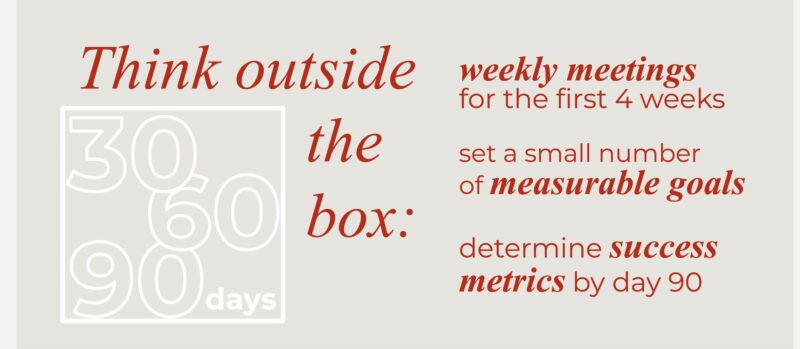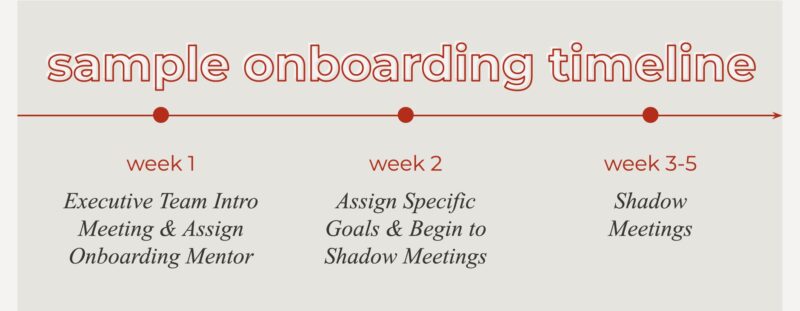
Successful software and enterprise tech businesses invest a lot of time and resources into finding strong executive talent. Onboarding that talent, however, can get less attention, which can cause a bumpy transition for the executives and the company.
“Today, we see companies meticulously defining role requirements and arranging for executive teams and board members to meet with candidates before an offer is made,” said David Winch, co-head of True’s Software & Enterprise Tech practice.

According to Gallup, people who experience a poor onboarding experience are several times more likely to be disengaged at work, costing an estimated $8 trillion globally. Poor executive onboarding can also affect retention rates, existing employees, and new employees.

They also found that new hire productivity was 50 percent higher at companies with a standardized onboarding process.
David Winch and Steve Tutelman from True Search’s global Software & Enterprise Tech Practice explore how companies can uplevel the onboarding process for their new executives.
Onboarding Starts in the Interviews
“Onboarding starts at your third interview,” said Steve Tutelman, co-head of True’s Enterprise practice.

Typically, Tutelman explains, the first interview is “get-to-know-you” with each side’s light assessment of fit. The second interview dives deeper into the details and both sides tend to decide whether it’s worth a further investment of time. By the third interview, the candidate and the company are starting to figure out how they’d work together.

Tamir Sigal, chief marketing officer of Trintech, a financial SaaS company offering products tailored to company size, said that for him, onboarding starts with interviews with key stakeholders, primarily the CEO.

Those early conversations lay the foundation for everything to follow. Candidates learn the expectations they’ll face and get critical insight into the people they will need to collaborate with as a high-performing team. Through conversations and executive assessments like True Advance, the candidate and the executive leadership team can establish rapport and understand each other’s working and communication styles.
In the interviews, companies should also share the state of the business and where it’s headed. That transparency might include sharing the realities of customer churn and product-market fit, or whether the company intends to move upmarket or downmarket in the future.

Misalignment can lead to a pointless loss of morale and momentum for that new executive. On the other hand, proper alignment sets the stage for the new executive to strategize for success–even before their first day.
“There is a balance between selling the role and making sure someone knows what they’re walking into. That is a very tight balance that we invest a lot of time into helping clients navigate,” Tutelman said.
Think outside the 30-60-90 day plan
While classic guidelines for the initial 30-60-90 days provide an overall structure, breaking down early goals into smaller pieces can allow executives some quick wins and avoid overwhelming them.
People across the organization will generally welcome new leaders on a scale of cautious optimism to pessimism, with more of a “prove it first” mentality. Giving the new hire a chance to quickly demonstrate competence will foster trust and excitement among the team—and give the executive their best chance of success.
It’s also important to ensure balance. Hold new executives accountable for delivering and give them targets that will challenge them, but don’t set the bar so high they fall behind and lose the trust of the team.
Early on, the key is to pick a small number of measurable goals. Try not to get caught up in the big picture: goals like “double our sales team and revenue over the next 12 months” are generally not helpful. There are too many steps between day one and the target. Set goals that help you evaluate the new executive and whether or not your thesis in hiring them is correct.
Sigal suggests weekly meetings for the first month. He adds, “Making sure the new executive understands what success looks like for the organization by the time they reach that 90-day mark is crucial.”

Give a tour of the key stakeholders
Be thoughtful about the key figures your new executive will need to know and arrange strategic and intentional introductions for them. The new executive will learn where they and their colleagues fit into executing the company’s priorities and gain needed credibility and influence within the organization.
Too often companies are focused only on the task at hand: making sure the new chief revenue officer meets the marketing leader, product leader, technology leader, finance leader, and so on. Those meetings rarely have clear agendas, but they should.
The CEO or hiring manager should also introduce the new executive to the rest of the leadership team in a group meeting. Making this introduction with excitement and positivity in a group setting goes a long way in setting the new leader up for success. Don’t just send them off with a list of people to meet. Do walk the executive into the room and explain why everyone should be excited.
Arrange Shadowing Opportunities
Cross-functional collaboration is one of the key aspects of successful onboarding, Winch says. Pick two or three leaders the new executive will work closely with, and have them shadow them for two weeks. What better way to foster collaboration than to have your new executive “carpool” with others?

Assign An Onboarding Partner
Give your new executive a partner through their onboarding process, and don’t make it their manager or the CEO. Select someone one degree of separation away from the core group they’ll work with every day (preferably a member of the executive leadership team). Avoiding a direct manager or CEO allows for a more open and honest interaction.
For Sigal, his partner was his counterpart as CMO, Trintech’s chief revenue officer.
“On my first day at Trintech, the CRO hugged me and said ‘Finally, you’re here,’” Sigal said. “The rapport and relationship were built during the interview process. He opted to help onboard me. For him, personally and financially, it’s his incentive to ensure I’m onboarded properly, and know what’s working and what’s not,” said Sigal.

The Follow-Through
Scheduled touch points throughout the executive’s first year can also help drive long-term success. Executive sponsors should be hands-on with new executives, holding frequent check-ins and fostering open communication to develop trust and lay the foundation for success.
Tutelman explains that True Search conducts some due diligence after a placement. “With a candidate, we do check-ins after they start to hear how it’s going. We get feedback that’s a lot less filtered than the feedback they’d likely give to the company.”
He suggests companies check-in every 30 days with the new executives for at least the first 3-6 months.

Sigal’s go-to question for all new executives and employees achieves the same effect. He asks all new people after their first week: “What was your WTF moment this week?” It allows them to clear up questions right away, and their answers can fuel improvements in the company’s onboarding programs going forward.
Be sure to ask new executives for their opinion on what they’ve observed. You have someone with immense experience and a fresh perspective who just walked in your door. They aren’t saddled with any company politics, frustrations with tech debt, or instances of shiny object syndrome. Take advantage of this window during their onboarding: get their opinion, and take it all in.
To continue the conversation, contact Steve Tutelman or David Winch.